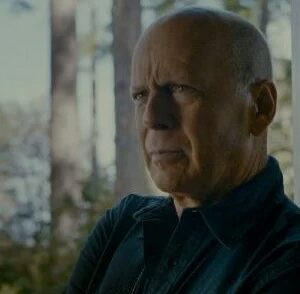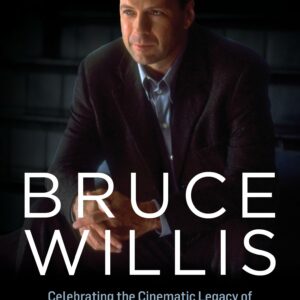Aretha Franklin, the undisputed Queen of Soul, left an indelible mark on the world of music, transcending genres and generations with her powerful voice, emotive lyrics, and the deep resonance of her songs. Born in 1942 in Memphis, Tennessee, Franklin began her musical journey singing gospel in her father’s church. Over the decades, she became a cultural icon, delivering a prolific body of work that has influenced not only the realm of music but also social movements, particularly those centered around civil rights and women’s empowerment.
Her voice, steeped in the traditions of gospel and blues, carried a power that shook listeners to their core. Beyond her unmistakable vocal abilities, it was Franklin’s ability to channel the struggles, hopes, and dreams of a generation that made her a transformative force. Her music became an anthem for social change, but it also ignited a revolution in movement, inspiring choreographers, dancers, and entire dance styles to emerge from the rhythmic fire she kindled.
The Impact on Dance Styles
Aretha Franklin’s music, characterized by its soulful rhythms, impassioned lyrics, and electrifying beats, has had a profound influence on dance across multiple styles, including Motown, Soul, and even contemporary choreography. At the height of her career during the 1960s and 1970s, Franklin’s work was closely tied to the flourishing Motown scene. This era marked a golden age for both soul music and dance, as these art forms moved together, evolving in tandem.
The syncopated beats of her songs, such as “Respect” and “Think,” provided the perfect backdrop for the rise of intricate, emotive dance routines. Motown dancers drew from gospel, jazz, and street dance traditions to create expressive movements that reflected the passion and vitality of Franklin’s music. Her tracks offered a sense of liberation, with her bold, uplifting themes encouraging dancers to embrace a fuller range of expression. Whether it was on the stages of Detroit’s Motown studios or across dance halls in New York, Franklin’s music helped shape the exuberant energy of soul dance and gave rise to iconic movements synonymous with her voice.
Soul dance, like Franklin’s music, emphasized freedom, individuality, and emotional depth. It was not just a technical or choreographed art form, but rather an instinctual, often improvisational expression of what it felt like to live and struggle in America. Her songs inspired movements that were reflective of the human condition – sometimes raw, sometimes celebratory, but always deeply rooted in reality. As her music crossed racial, cultural, and generational boundaries, so too did the dance movements she inspired, paving the way for contemporary dance to draw heavily from these styles.
Key Performances and Choreographies Inspired by Franklin’s Music
Aretha Franklin’s songs are not merely music; they are visceral experiences that transcend the auditory realm and invite physical expression. Throughout the years, choreographers and dancers alike have used her songs as the foundation for some of the most iconic and unforgettable performances in dance history.
One of the most celebrated examples is the choreography inspired by her seminal anthem, “Respect.” From its release in 1967, “Respect” became not only a feminist anthem but also a statement of empowerment for dancers. The song’s irresistible groove and its commanding lyrics emboldened dancers to create movements that were assertive, bold, and unapologetically powerful. Across stages, dance studios, and television performances, choreographers created routines that allowed dancers to reclaim their space, much like the way Franklin demanded “just a little respect.” These performances often incorporated sharp, confident gestures, embodying the energy of the song and the message behind it.
“Think,” another powerful anthem, has been a mainstay in many dance repertoires. From Broadway stages to urban street performances, “Think” has inspired dance routines that are frenetic and unapologetic in their energy. The lively call-and-response nature of the song, coupled with its insistent rhythm, lends itself to dance styles that are filled with dynamic footwork and bold movements. The song’s famous appearance in the movie The Blues Brothers further cemented its place in dance history, as Franklin herself performed a dynamic routine surrounded by dancers whose choreography was both spirited and spontaneous, emphasizing her fiery energy.
“Chain of Fools,” with its slow burn and steady rhythm, has also been the source of inspiration for many a dancer’s body language. The song’s deep bluesy feel encourages fluid movements, creating a perfect vehicle for choreography that is sensual and smooth. This song has been performed in jazz clubs, contemporary dance pieces, and interpretative performances, each pulling from the heartache and longing expressed in Franklin’s voice.
Cross-Generational Influence
Aretha Franklin’s music has crossed the boundaries of time, inspiring both classic and modern choreographers and dancers from the 1960s to today. The resilience and power in her voice echo through decades of dance, influencing multiple generations. From the Motown dancers of the 60s, with their impeccable timing and syncopation, to today’s choreographers who blend street dance, modern, and contemporary styles, Franklin’s influence remains unyielding.
Modern choreographers often cite Franklin’s work as a source of inspiration, recognizing the way her music can infuse depth and emotion into their dance pieces. Her songs provide a rich emotional landscape, ripe for exploration through movement. For example, in contemporary dance, her music is often used to convey stories of struggle and empowerment, with dancers using their bodies to reflect the triumphs and tribulations of the human spirit.
Dancers today often reinterpret Franklin’s classics in new and innovative ways, blending genres like hip-hop, contemporary, and even ballet with the soul and Motown styles her music helped create. This melding of old and new reflects Franklin’s own ability to transcend the ages, and her music continues to challenge dancers to innovate while staying true to the heart of her sound.
Collaborations with Famous Choreographers
Throughout her career, Aretha Franklin’s music has been acknowledged and embraced by many choreographers who have credited her as an inspiration. One of the most notable collaborations occurred when choreographer Debbie Allen used Franklin’s music as part of her dance productions. Allen, an icon in the dance world, has often expressed her admiration for Franklin’s ability to inspire movement that is both joyous and defiant. Allen’s dance numbers, much like Franklin’s songs, encourage dancers to explore the full range of human emotions, from elation to despair, using the body as a tool for storytelling.
Other famous choreographers, such as Alvin Ailey, founder of the Alvin Ailey American Dance Theater, have similarly drawn from Franklin’s rich repertoire. Ailey’s mission to reflect African-American culture through modern dance found a kindred spirit in Franklin’s music. Songs like “Amazing Grace,” in particular, served as the perfect backdrop for Ailey’s choreography, blending gospel music with modern dance to express both the pain and beauty of the African-American experience.
Aretha’s Role in Empowering Dance as a Medium of Expression
Aretha Franklin’s music was a beacon of empowerment for countless listeners, and it also played a pivotal role in empowering dance as a medium of expression. Her songs touched on themes of social justice, equality, and the fight for civil rights, all of which resonated deeply with the dance community.
In the midst of the civil rights movement, Franklin’s songs gave dancers an outlet to channel their frustrations, fears, and hopes into their performances. Dance became a tool for protest and expression, much like Franklin’s music was a voice for change. Her songs were not merely about personal empowerment, but about collective liberation. In this way, Franklin’s music turned dance into more than just entertainment – it became a medium through which social messages could be communicated, a platform to express resistance and hope.
Many of the dances choreographed to Franklin’s music during this time were raw and powerful, filled with emotion. Whether on stage or in the streets, dancers used movement to articulate the struggles of the time. Franklin’s music gave them the permission to be bold, to express anger and joy in equal measure, and to fight for the recognition of their humanity.
Closing Thoughts on Franklin’s Enduring Influence
Aretha Franklin’s music continues to inspire and shape dance performances worldwide, with her legacy living on in the bodies of dancers who find freedom and power in her songs. Her ability to translate the human experience into music has left an indelible mark on the world of dance, where choreographers and performers continue to draw from her immense well of inspiration.
From Motown’s golden age to the contemporary stages of today, Franklin’s music will always serve as a bridge between generations, uniting dancers in their shared reverence for her artistry. As long as there are dancers seeking to tell stories of love, pain, empowerment, and freedom, Aretha Franklin’s music will remain the powerful heartbeat driving them forward, ensuring that her legacy in both music and dance will never fade.





